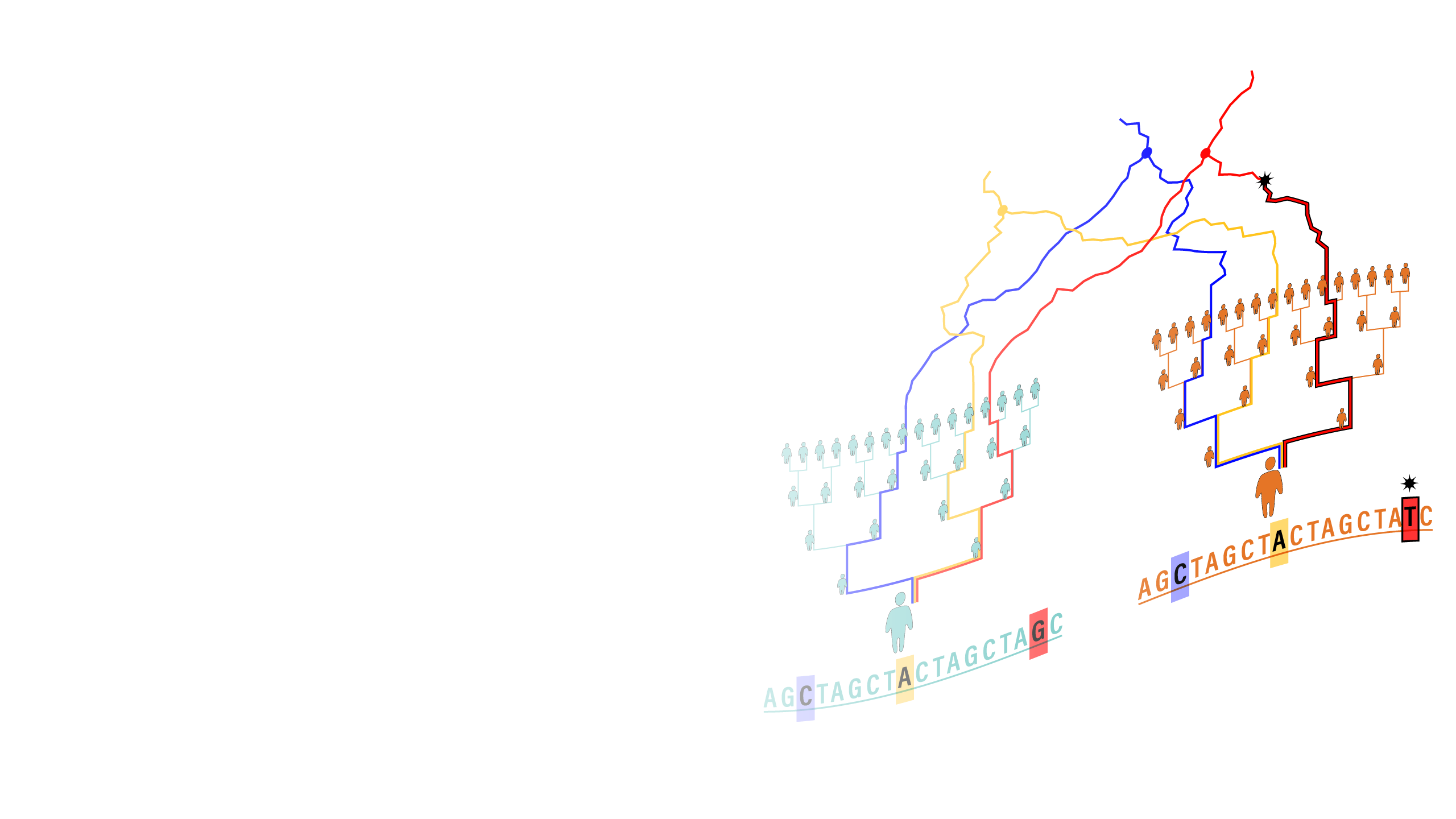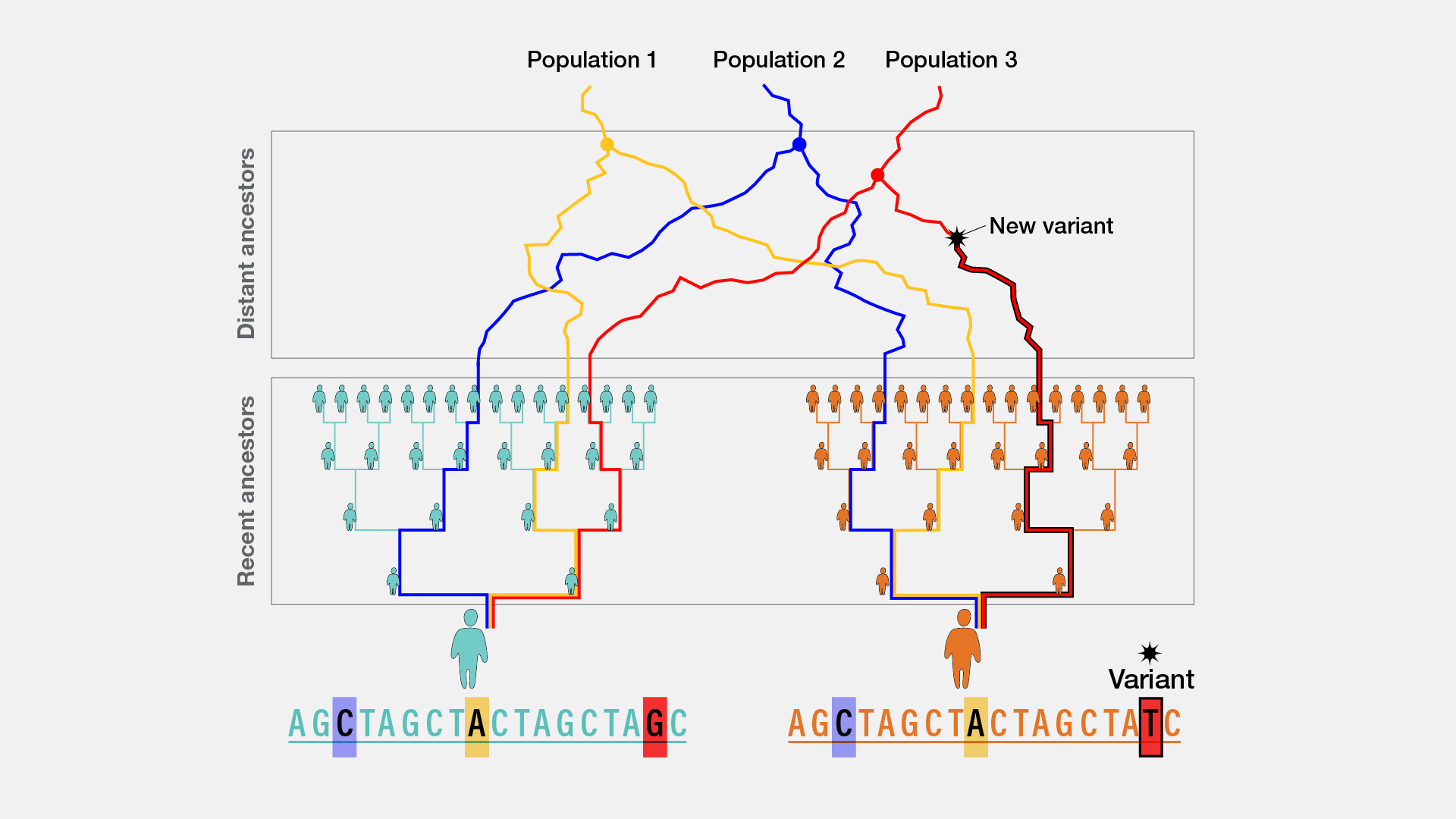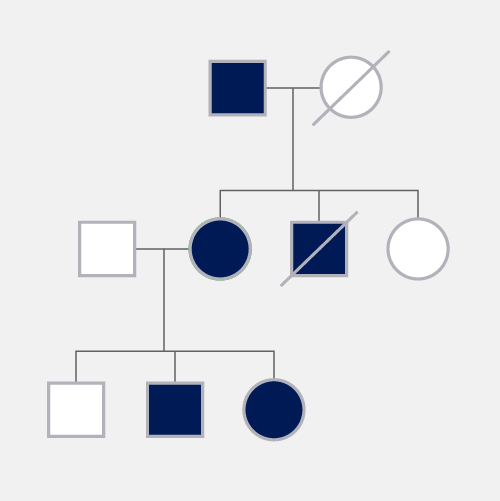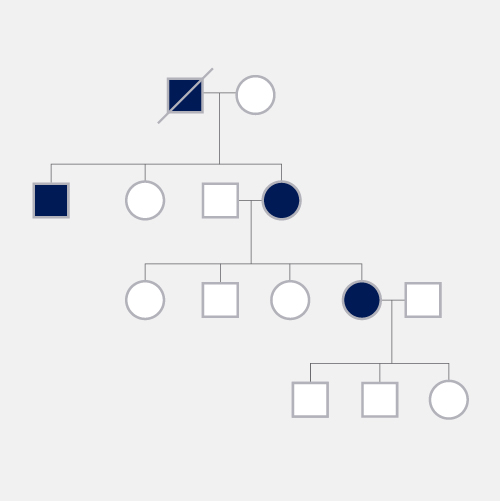
Local Ancestry
Definition
Local ancestry refers to segments of an individual’s genome that can be traced back to ancestors from different populations living in different places and at different times. Certain genetic variants are more common in people from some regions of the world than others. Throughout the genome, genetic variants are physically co-located together in segments called haplotypes. In the genome of a person with ancestry recently derived from people in many regions of the world, each of these haplotypes may contain genetic variants that represent from which one of the regions their ancestors lived.

Narration
The story of the human species is one of movement. Throughout our history, groups of people or populations have migrated in and out of different regions around the world, merging or splitting in the process. Sometimes this movement is voluntary but other times it's forced. The result is that our modern genomes are patchworks or mosaics of DNA segments inherited from people living in different places and at different times. This genetic ancestry at a specific location in a person's chromosome is their local ancestry. Genetic variants that were close to each other and a genome of a living person's genetic ancestors may still be grouped together or linked in what are known as haplotypes. Local ancestry will depend how far back in time your ancestors live. For example, looking 50,000 years in the past a person may have Neanderthal ancestry in a particular region of their genome. While 5000 years ago, they may have ancestry from hunter gatherers living on the European continent. And just 500 years ago, that same person may have local ancestry segments from people that lived in South America, West Africa and the Iberian Peninsula.




